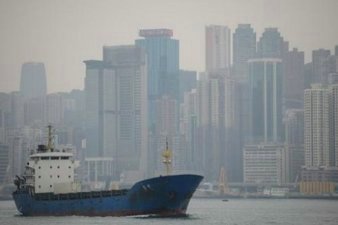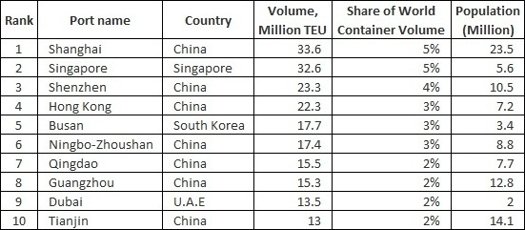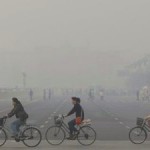
New York – China’s largely unregulated ports and shipping system generate significant air pollution that imposes a huge health and environmental burden and contributes to the country’s over 1 million pollution-related deaths each year, according to a new report released on October 28 by the Natural Resources Defense Council (NRDC).
China is now home to seven of the globe’s top ten busiest ports and does not require that container ships meet the same air quality standards administered by many other ports around the world. Consequently, one container ship operating along the coast of China emits as much diesel pollution as 500,000 new Chinese trucks in a single day.
“China’s container ports are among the busiest in the world, yet their pollution is mostly unmonitored and uncontrolled,” said Barbara Finamore, NRDC’s Asia Director. “Along with the massive cargo every ship and truck delivers to these ports, comes even more air pollution in the form of a toxic stew of cancer-causing diesel exhaust and black carbon that chronically plague China’s growing port regions. Luckily, today we have a suite of proven strategies and clean technologies, already employed around the world, which can reduce these shipping emissions.”
NRDC’s analysis, “The Prevention and Control of Shipping and Port Air Emissions in China”, outlines near- and long-term pollution reduction strategies to address the human health toll China pays for its shipping emissions.
A recent study estimates 1.2 million premature deaths in China in 2010 were caused by ambient air pollution. Since Chinese port cities are some of the most densely populated in the world and about 30 percent of the world’s containers pass through these ports, air pollution from ships and port activities likely contributes to much higher public health risks in China than in other port regions.
World’s Top Ten Container Terminals and Throughput for 2013
Most ships at Chinese ports emit high level of diesel particulate matter, nitrogen oxide and sulphur oxide. These air pollutants cause public health risks such as respiratory complications like asthma aggravation, decreased lung function, and much worse, premature death in people with heart or lung disease. Some of these pollutants also exacerbate climate change.
China’s severe air pollution crisis recently prompted the Chinese government to adopt a new landmark set of ambient air quality standards. But, only a few port cities and provinces have begun to pay attention to emissions from ships and port activities. Hong Kong, for example, is the first to strictly enforce the use of low sulphur fuel by local vessels and plans to be the first in China to mandate ocean-going vessels to use low sulphur marine diesel. Shenzhen has followed Hong Kong’s lead, recently announcing a comprehensive list of ships and ports cleanup initiatives. A few other port cities in China have also introduced some preliminary plans to control shipping and port-related emissions. Without port-specific data and analysis, however, implementation of these plans is likely to face challenges including industry opposition.
“Research and adoption of measures to control air emissions from shipping and ports are still at an early stage in China, and we believe there is much room for enhancing the emissions control performance of vessels and port equipment here,” said Ding Yan, Deputy Director of the Vehicle Emission Control Center of the Ministry of Environmental Protection. “Our current priority is to develop an inventory of emissions from ships and other port activities, especially for key port cities. This data is critical to guide our efforts in setting the most cost-effective strategies for combating air pollution from ports and ships.”
Governments in North America and EU have already taken steps to regulate ship and port emissions or launched programs to encourage low sulphur fuel and clean technologies. NRDC has worked for over two decades to eliminate dirty diesel fuel and clean port operations worldwide, including pioneering action plans to clean up the largest toxic hotspots, implement clean freight and reduce port-related pollution at the Ports of Los Angeles, Long Beach, Oakland, New York, New Jersey, and elsewhere. These iconic successes can provide strong support to the development of clean shipping and port initiatives in China.
















